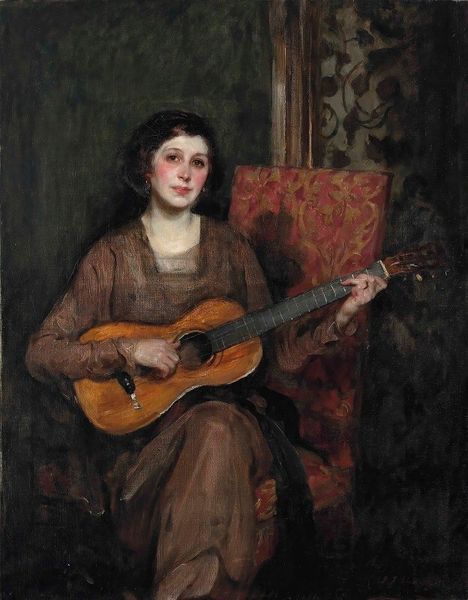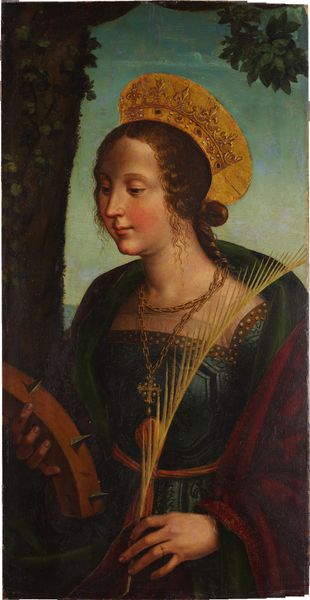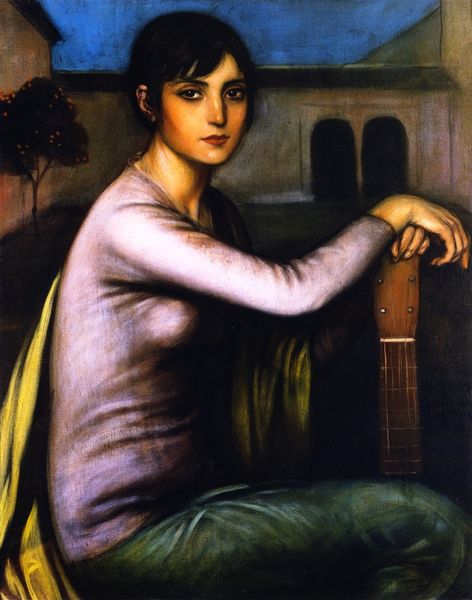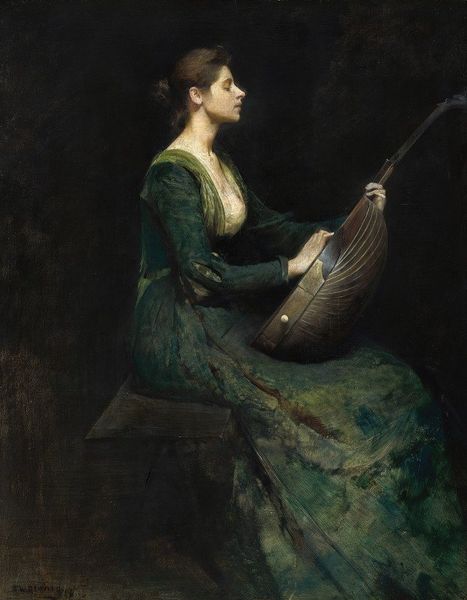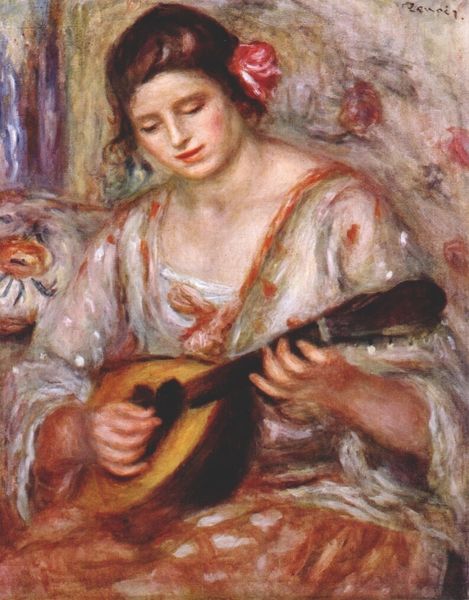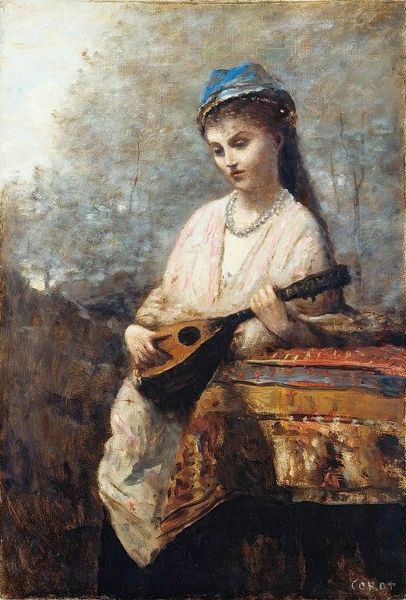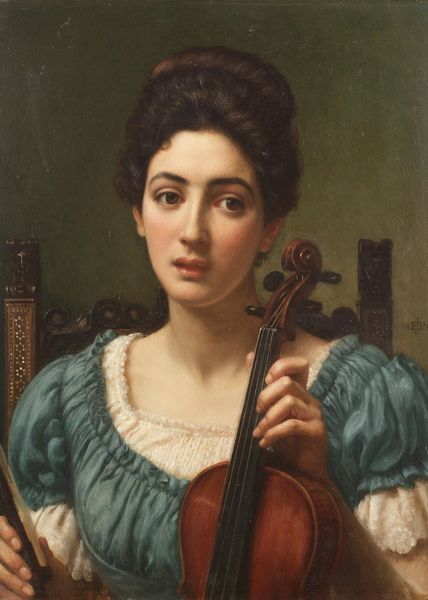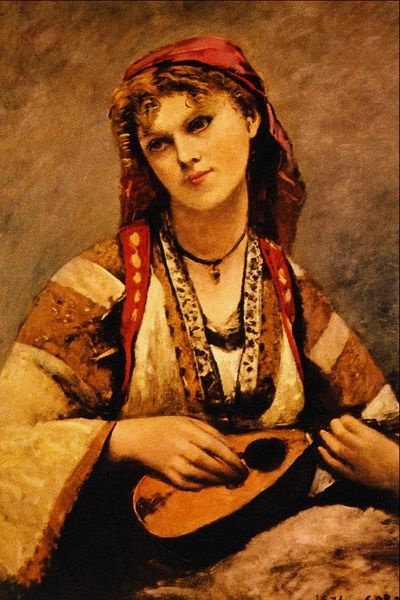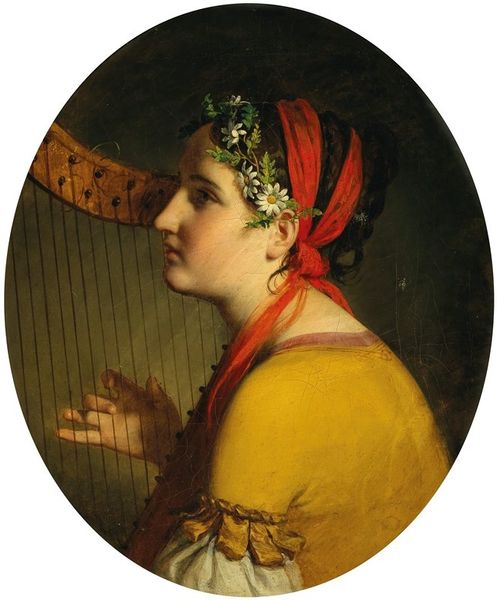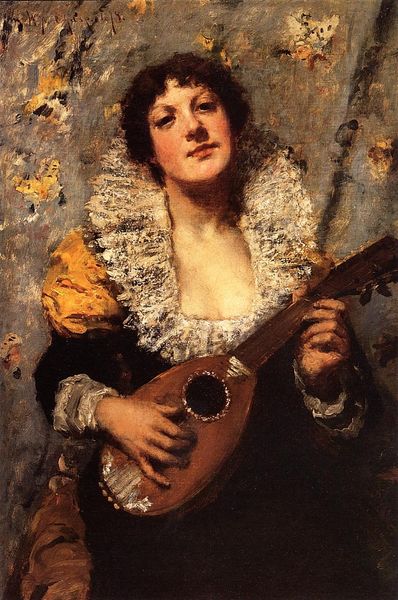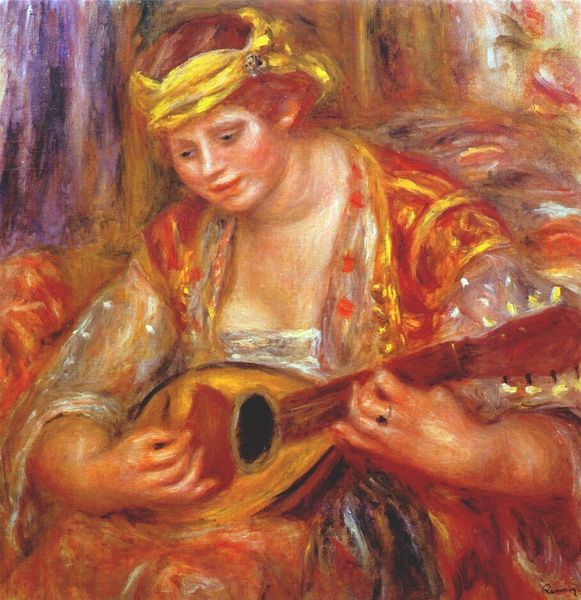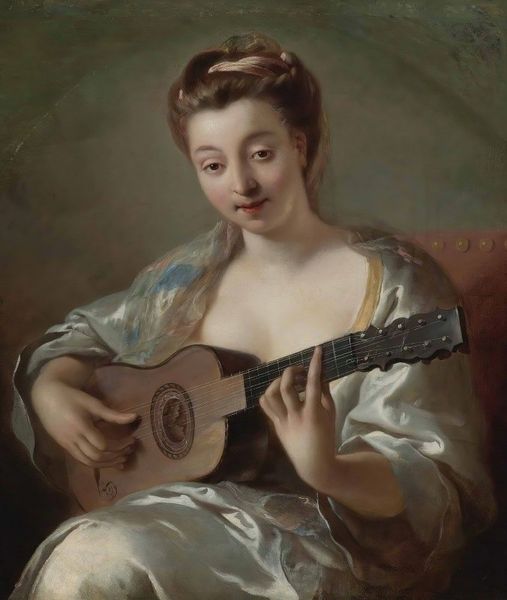
painting, oil-paint
#
portrait
#
painting
#
oil-paint
#
figuration
#
romanticism
#
history-painting
#
pre-raphaelites
#
musical-instrument
Copyright: Public domain
Curator: Standing before us, we have William Holman Hunt’s painting entitled "Bianca." Editor: The first thing that strikes me is its subdued opulence. The fabrics look heavy, the colors muted, yet there is a feeling of tremendous material wealth, and melancholy too. Curator: Absolutely. Now, think about the materials Hunt is working with here. He's layering oil paint to create these remarkable textures—the sheen of the silk, the intricacy of the lace collar, even the polished wood of the mandolin. This level of detail points to not only the Pre-Raphaelite obsession with naturalism, but the amount of labor that went into producing these commodities and recreating them on canvas. Editor: And consider Bianca herself. She seems to be positioned as a reflection of the historical and social role of women and the artist as tastemaker. The pearl necklace, the ornate gown—these are signifiers of class, privilege, and objectification, reflecting contemporary patriarchal views. Perhaps a woman with music lessons but, despite her adornments, burdened and resigned. Curator: Exactly. Hunt, through his meticulous portrayal of these materials, highlights the relationship between wealth, status, and female identity. The material possessions displayed in the painting actually underscore Bianca's constrained existence and limited agency. Think about how textiles played such a key role for women at this time! Needlepoint and the careful upkeep of the household all tied into this complicated dance around women's worth and place within Victorian England. Editor: The gaze says so much, doesn’t it? In context of Pre-Raphaelite Brotherhood and the male gaze within art, one must question Bianca's story, her autonomy within Hunt’s historical rendering, or romantic ideal. Curator: And yet, as beautiful as the image appears, it's impossible to ignore the commentary woven into the material realities he painstakingly paints. We begin to understand how closely tied social value is to material culture, and particularly how that manifests in female representation. Editor: Precisely, it compels a contemporary dialogue concerning class, artistic representation and a patriarchal gaze that lingers. It prompts us to wonder how far we've truly come.
Comments
No comments
Be the first to comment and join the conversation on the ultimate creative platform.
